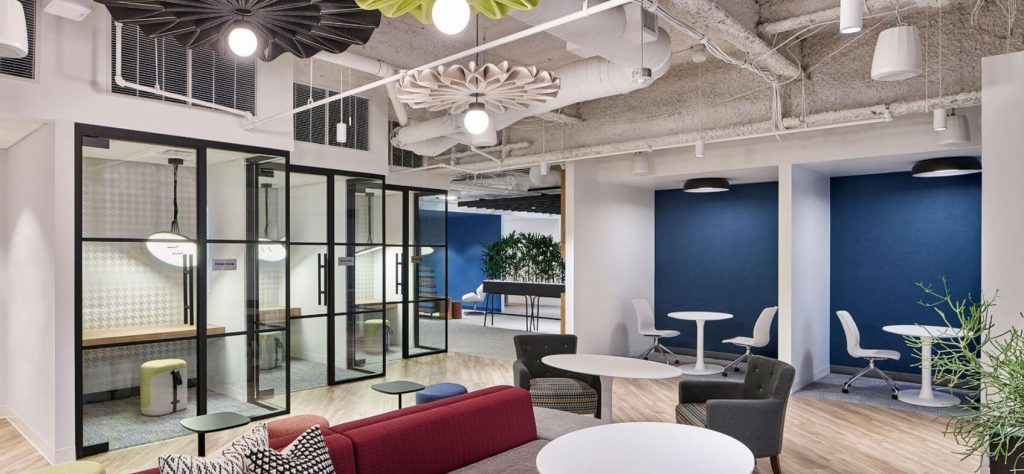Hybrid Workplace Strategy: Key Steps to Future-Proof Your Organization
The way we work has changed forever.
The hybrid workplace — a model where employees split their time between the office and remote locations — has moved from a pandemic necessity to a core business strategy. Today, organizations that master hybrid work aren’t just improving flexibility; they’re building a significant competitive advantage.
In this guide, we’ll break down how to design a hybrid workplace strategy that works — one that boosts productivity, retains top talent, and creates a thriving company culture for years to come.

Why Organizations Must Rethink Hybrid Work Now
Hybrid work is no longer a “nice to have” — it’s an expectation. Recent studies show that 8 in 10 remote-capable employees are working hybrid or fully remote, and 59% prefer hybrid as their ideal work arrangement.
Without a hybrid strategy, organizations risk:
Losing top performers to more flexible competitors
Struggling with low engagement and collaboration
Facing increased real estate and operational inefficiencies
The hybrid future is already here. Those who proactively redesign work around it will lead their industries — those who don’t may find themselves scrambling to catch up.
The Core Pillars of a Successful Hybrid Workplace Strategy
A strong hybrid workplace strategy stands on five essential pillars:
Flexibility and Autonomy: Trust employees to choose where and how they work best, within clear frameworks.
Communication and Collaboration Infrastructure: Invest in tools that support seamless virtual and in-person teamwork.
Culture and Connection: Design deliberate moments for relationship-building, not just project updates.
Clear Policies and Governance: Define expectations, eligibility, and accountability — leave no gray areas.
Leadership Enablement and Training: Equip managers to lead hybrid teams effectively with empathy and clarity.
Think of these pillars as the foundation that supports a sustainable and scalable hybrid model.

Designing Your Hybrid Workplace Strategy Step-by-Step
Step 1: Clarify Your Organizational Goals
Ask: What are we solving for? Better employee experience? Lower costs? Greater innovation?
Step 2: Map Roles by Work Mode
Not all jobs are suited for hybrid work. Classify roles as:
Remote-eligible
Office-dependent
Hybrid-flexible
Step 3: Develop Communication Protocols
Establish norms for:
When to meet live (synchronous)
When to work independently (asynchronous)
For example: daily standups are virtual, deep work time is protected.
Step 4: Rethink Office Space Usage
Shift from fixed desks to flexible “hot desks” and collaboration hubs. Prioritize spaces that encourage brainstorming, mentoring, and team-building.
Step 5: Invest in Technology
Ensure parity for remote and in-office workers with:
High-quality video conferencing setups
Digital whiteboards
Strong cybersecurity protocols
Common Challenges (and How to Solve Them)
Challenge 1: Unequal Experiences
Remote workers may feel sidelined during meetings and career discussions.
Solution:
Adopt “remote-first” practices like virtual all-hands meetings and promotion pathways visible to all.
Challenge 2: Manager Discomfort
Leading distributed teams requires new skills.
Solution:
Offer leadership training focused on remote team management, coaching, and outcomes-based evaluation.
Challenge 3: Digital Fatigue and Burnout
Back-to-back Zoom calls and endless Slack messages exhaust employees.
Solution:
Encourage async communication, block focus hours, and model healthy digital boundaries from the top.
Challenge 4: Underutilized Office Spaces
Empty desks are costly.
Solution:
Use occupancy analytics to reconfigure space dynamically — think project rooms, lounge zones, and flexible meeting areas.
Building a Thriving Hybrid Culture
Culture doesn’t disappear in hybrid environments — it evolves. To build belonging and connection:
Create Rituals: Virtual coffee chats, team newsletters, hybrid town halls.
Foster feedback loops: Regular surveys, anonymous Q&A, 1-on-1s.
Celebrate wins across channels: Slack shoutouts, video highlights, office celebrations.
Make sure remote and in-office employees experience the same access to mentorship, growth opportunities, and recognition.
The Future of Hybrid Work: Trends to Watch
AI-Enhanced Collaboration
Expect AI to automate meeting notes, project management updates, and smart scheduling to ease the coordination burden.
Borderless Hiring
Geography is becoming irrelevant. Companies will tap into global talent pools, requiring more sophisticated onboarding and cultural integration strategies.
Reimagined Workspaces
Headquarters will shrink. Expect more satellite offices, coworking partnerships, and experience-driven spaces tailored for collaboration, not just sitting at desks.
Conclusion
If you’re looking to design and build a workspace that supports a thriving hybrid workforce model, contact our team today. We’ve helped hundreds of clients create high-performing, flexible environments that empower their people to do their best work — and we’re ready to help you do the same.

